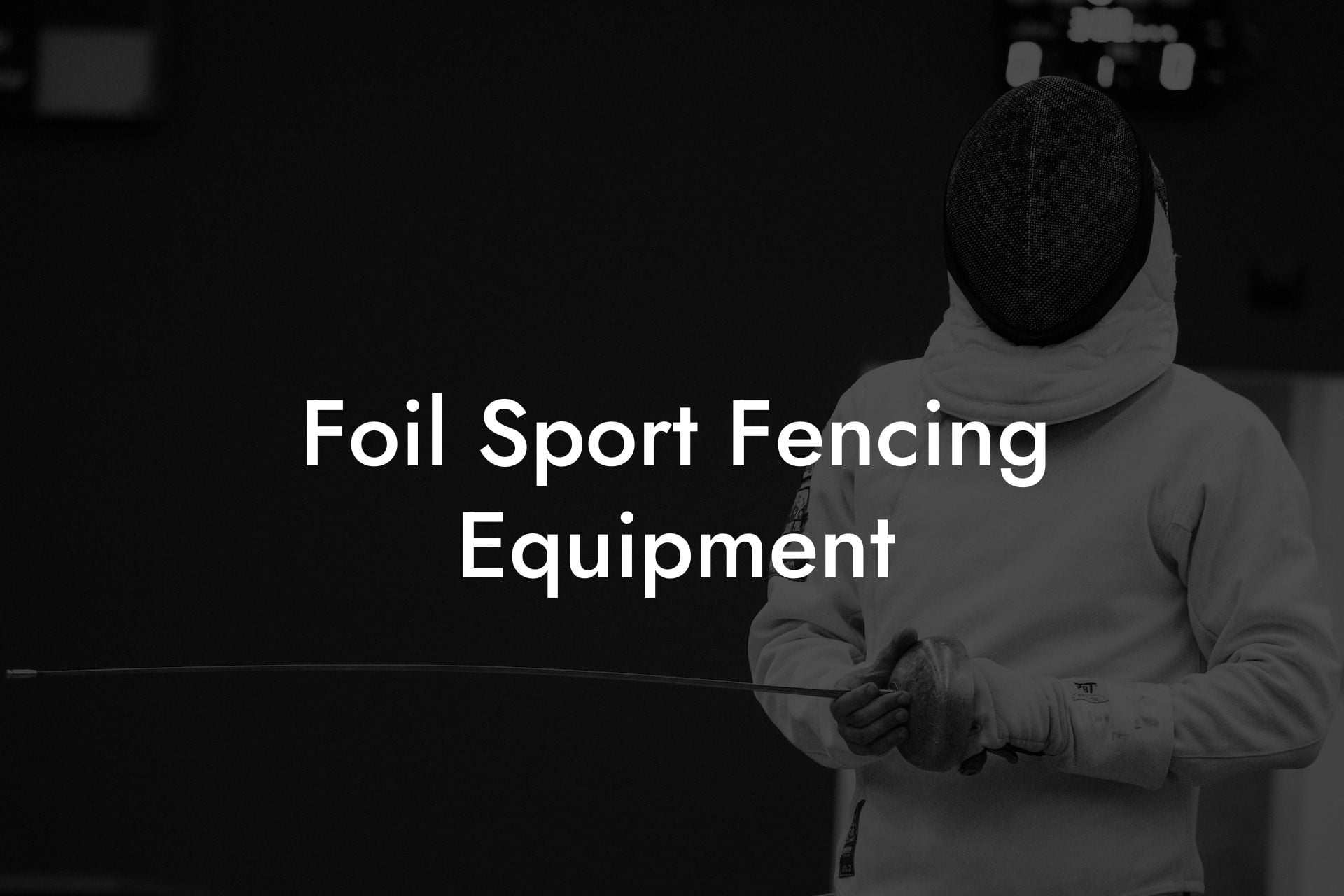Foil sport fencing is an exciting and intriguing sport that combines strategy, skill, and athleticism. Successful foil fencers must navigate a complex series of rules, tactics, and techniques to outwit and outmaneuver their opponents. And central to all of this is having the right equipment. In this guide, we will not only cover the essential pieces of foil sport fencing equipment but also provide insights into how to choose the best gear for your fencing journey. So, grab your epee and let's get started!
Foil Sport Fencing Equipment Table of Contents
The Basics of Foil Fencing Equipment
The first step in selecting the right foil fencing equipment is understanding the essential pieces you will need. Foil fencing requires the following equipment:
1. Foil
The foil is the primary weapon used in this sport. It features a flexible, rectangular blade and a keen-pointed button on the tip to register hits. The foil's lightweight design encourages precision and agility.
2. Mask
Safety is of utmost importance when engaging in fencing. The mask protects the head and face from weapon contact and features a rigid mesh for visibility.
3. Jacket
The jacket provides essential coverage of the torso and arms, ensuring the fencer's safety while also remaining flexible and comfortable.
4. Gloves
Fencers need specially designed gloves that offer good grip, wrist protection, and insulation from electric current.
5. Plastron
A plastron is a mandatory underarm protector for the weapon arm, adding an extra layer of safety.
6. Knickers
Knickers are specialized pants that provide coverage for the legs during competition.
7. Socks and Shoes
Long socks, typically reaching just below the knee, and proper athletic shoes complete the foil fencing attire.
Choosing the Right Foil Fencing Equipment
Now that you know the basic types of equipment required for foil fencing let's explore the key factors to consider when purchasing your gear.
1. Quality
Invest in equipment made from durable and high-quality materials to ensure both safety and longevity.
2. Comfort
Select gear that fits well and allows for freedom of movement, as comfort is essential in a sport that demands quick reactions and athleticism.
3. Budget
Fencing equipment varies widely in price. Determine your budget and prioritize quality gear within that range.
4. Electric vs. Non-electric
While electric scoring is used in most competitions, non-electric gear is often suitable for practice and beginners. Be aware of the differences and ensure you're purchasing the appropriate type of foil and other equipment based on your needs.
5. Sizing
Properly fitted equipment is vital for both safety and comfort. Seek assistance from experienced fencers or coaches to ensure you choose the correct sizes for your gear.
Foil Sport Fencing Equipment Example:
Imagine you're a beginner foil fencer, ready to invest in your first set of equipment. Here's a practical scenario for purchasing gear:
1. Choose a non-electric foil to start, allowing for a more budget-friendly option while still focusing on quality materials and construction.
2. Seek advice on proper sizing for your mask, jacket, knickers, and gloves.
3. Select long, comfortable fencing socks, and invest in a reliable pair of athletic shoes that provide adequate support and grip.
4. Prioritize a comfortable, well-fitting plastron for added safety.
5. As you advance and prepare for competitions, consider upgrading to electric gear for accurate scoring capabilities.
Now that you're equipped with the knowledge to select high-quality foil fencing gear, the next step is putting it to use. Fencing is an incredible sport to explore, and having the right equipment allows you to unleash your full potential. We hope this guide proves beneficial as you embark on your fencing journey. Share this article with other aspiring fencers and be sure to explore Anchorage Fencing Club's blog for more insightful guides on the captivating world of fencing.













